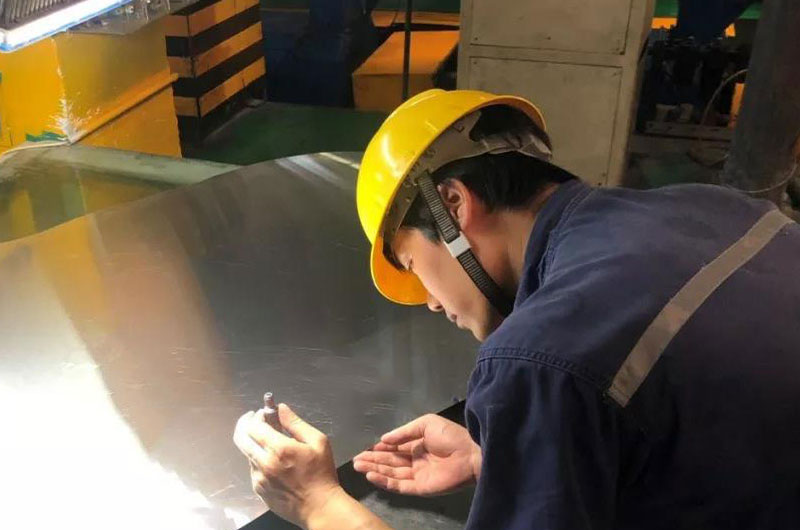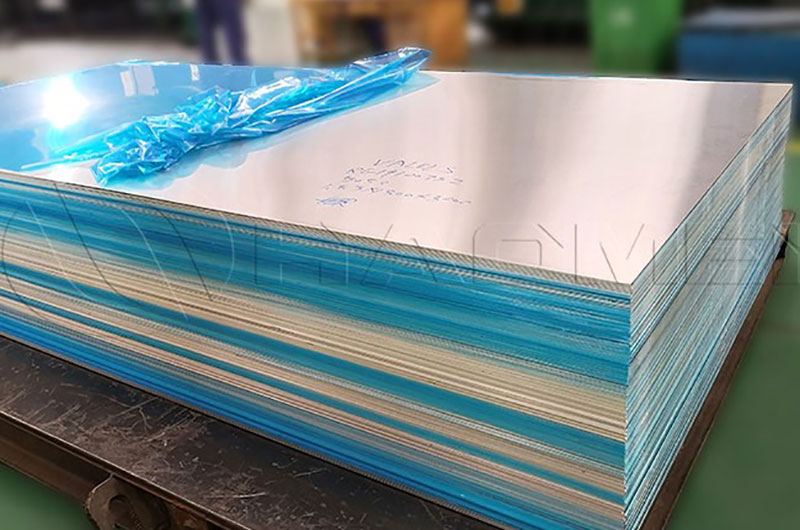6063 T5 Aluminum Plate Sheet
Strict Quality Control Competitive Price
What is 6063 T5 Aluminum?
6063 T5 aluminum is a special alloy in the 6000 series of aluminum alloys. It is known for its excellent extrudability and formability, making it a popular choice for a variety of applications requiring complex shapes and profiles. The "T5" designation indicates the hardness of aluminum.

Following are some of the key properties and properties of 6063 T5 Aluminum:
- Extrudability: 6063 T5 aluminum is highly extrudable, which means it can be easily formed and formed into various profiles and shapes through the extrusion manufacturing process. This allows complex and custom designs with consistent cross-sections to be produced.
- Strength: 6063 T5 aluminum has medium-strength properties. While it may not have the highest strength compared to other aluminum alloys, it offers a good balance of strength and formability for many applications.
- Formability: One of the key advantages of 6063 T5 aluminum is its excellent formability. It can be bent, shaped, and formed without noticeable cracking or deformation, making it suitable for applications requiring intricate shapes.
- Finishes: 6063 T5 aluminum can be given a variety of finishes such as anodizing, painting, or powder coating to enhance its appearance, durability, and corrosion resistance.
6063-T5 Aluminum Thickness
The thickness of 6063-T5 aluminum may vary depending on the specific application and manufacturing process. It is available in various thicknesses, from thin to thick. Common thicknesses for 6063-T5 aluminum range from 0.5 mm (0.02 in) to several inches, depending on specific requirements.

6063 T5 Aluminum Corrosion Resistance
6063 T5 aluminum has good corrosion resistance. The alloy forms a protective oxide layer on the surface that helps protect it from environmental factors such as moisture, chemicals, and atmospheric conditions.
6063 T5 is not as resistant to corrosion as some other aluminum alloys such as 6061-T6 or 5052-H32, especially in harsh or corrosive environments. Additional surface treatments or coatings can be applied to enhance corrosion resistance if desired.
Welding 6063-T5 Aluminum
6063 T5 aluminum can be welded using a variety of methods including TIG (tungsten inert gas) welding, MIG (metal inert gas) welding, and resistance welding.
Use proper welding techniques and procedures to ensure a successful weld and maintain the mechanical properties of the material. It is also recommended to pre-clean the aluminum surface and use a compatible filler material for a strong and durable weld.
Bending 6063-T5 Aluminum
Known for its excellent formability, 6063 T5 aluminum can be easily bent and formed into desired shapes without noticeable cracking or deformation.
6064-T5 Aluminum has good bending properties and can be made into various profiles and configurations. However, it is recommended to follow proper bending techniques and use proper tools and equipment to avoid excessive stress and ensure a successful bend.

Mechanical Properties of 6063-T5 Aluminum
The mechanical properties of 6063-T5 aluminum may vary depending on factors such as the specific manufacturing process and heat treatment. However, the following are some typical mechanical properties of 6063-T5 aluminum:
| Property | Typical Value |
|---|---|
| Tensile Strength | 130 - 185 MPa |
| Yield Strength | 110 - 170 MPa |
| Elongation | 8 - 12% |
| Hardness (Brinell) | 55 - 75 HB |
Strength of 6063-T5 Aluminum
6063-T5 aluminum has medium-strength properties. While it may not have the highest strength compared to some other aluminum alloys, it offers a good balance of strength and formability for a variety of applications. 6063-T5 aluminum typically has a tensile strength between 130 and 185 MPa (19, 000 and 27, 000 psi), depending on the specific fabrication process and size.
What is 6063 T5 Used for?
6063-T5 aluminum is commonly used in building, construction, and industrial applications. It is used in window frames, door frames, curtain walls, railing systems, furniture, radiators, lighting fixtures, electrical enclosures, and various structural components.
Its excellent extrudability, formability, and corrosion resistance make it suitable for a wide range of applications requiring a lightweight, durable, and aesthetically pleasing material.

6063-t5 vs 6063-t6 Aluminum
6063-T5 and 6063-T6 are two common tempers of 6063 aluminum alloy. The difference between 6063-T5 and 6063-T6 is the heat treatment process and the resulting mechanical properties.
Property 6063-T5 6063-T6
| Property | 6063-T5 Aluminum | 6063-T6 Aluminum |
|---|---|---|
| Tensile Strength | 130 - 185 MPa | 240 - 260 MPa |
| Yield Strength | 110 - 170 MPa | 210 - 230 MPa |
| Elongation | 8 - 12% | 8 - 12% |
The main difference between 6063 T5 and 6063 T6 is their level of strength.
- 6063-T6 aluminum has a higher tensile and yield strength than 6063-T5 aluminum and is therefore generally stronger.
- The T6 temper provides enhanced mechanical properties due to the additional heat treatment process.
The choice between the 6063 T5 and 6063-T6 depends on the specific requirements of your application.
- If higher strength is required, 6063-T6 may be preferred.
- If the application requires good formability and moderate strength, 6063-T5 may be suitable.
Note: these values are approximate and may vary based on specific manufacturing processes, dimensions, and testing standards. Consultation with aluminum suppliers or manufacturers is recommended for accurate and current information specific to your application or project.
What is the difference between 6061 and 6063 T5?
Alloy Composition
- 6061 T5 aluminum: an alloy with aluminum as the main component and magnesium (Mg) and silicon (Si) as the main alloying elements. It has a higher magnesium content than 6063 T5, which contributes to strength.
- 6063 T5 Aluminum: It is also an aluminum alloy with silicon (Si) and magnesium (Mg) as the main alloying elements. It has a higher silicon content than 6061 T5, which enhances its extrudability and formability.
Mechanical Properties
| Property | 6061 T5 Aluminum | 6063 T5 Aluminum |
|---|---|---|
| Tensile Strength | 240 - 290 MPa | 130 - 185 MPa |
| Yield Strength | 205 - 240 MPa | 110 - 170 MPa |
| Elongation | 8 - 12% | 8 - 12% |
Applications
- 6061 T5 Aluminum: It is often used in occasions that require high strength and mechanical properties. It is used in structural components such as aircraft components, automotive components, bicycle frames, and marine applications.
- 6063 T5 Aluminum: Widely used in construction and general applications due to its excellent formability and extrudability. Window frames, door frames, curtain walls, radiators, and various structural parts for the construction and design industry.
The T5 temper designation indicates that the aluminum has been artificially aged after extrusion. This provides improved mechanical properties, including strength and hardness.
Overall, the choice between 6061 T5 and 6063 T5 aluminum will depend on the specific requirements of your application, such as desired strength, formability, and extrudability. Consulting an aluminum supplier or manufacturer can provide more detailed information and guidance based on your specific needs.

